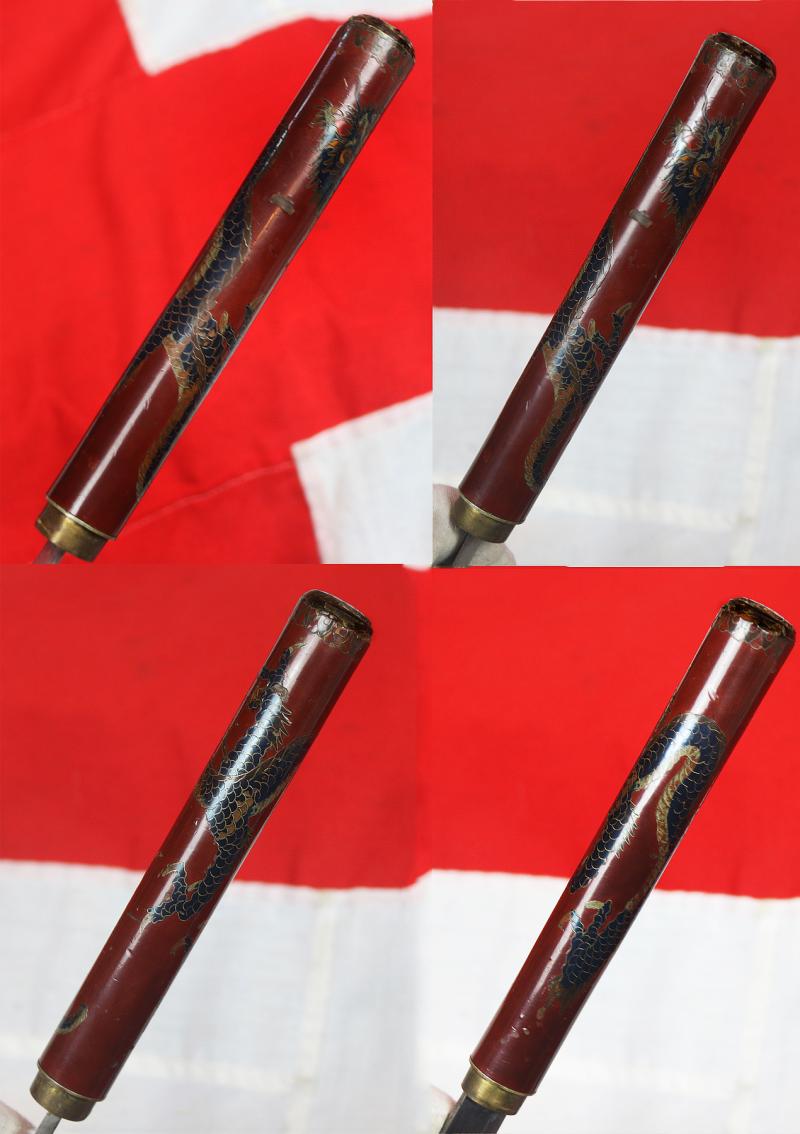A Most Rare & Fabulous Original Antique Japanese Samurai Shikomizue Sword Stick With A Stunning Cloisonné Form Polychrome Urushi Lacquer Dragon Handle, Ken Form Mirror Bright Blade With Suguha Hamon
Samurai Sword Stick, a Shikomizue 仕込み杖, "Hidden Sword" With A Stunning Cloisonné Form Polychrome Urushi Lacquer Dragon Handle, & Ken Form Mirror Bright Blade With Suguha Hamon
Considering its rarity quality and beauty, this would not have been the sword of a regular samurai, but one of high status and position, of a Shinobi no Mono or possibly Daimyo clan Lord. The functions of a Shinobi no Mono included siege and infiltration, ambush, reconnaissance, espionage, deception, and later bodyguarding. Antecedents may have existed as early as the 12th century. There is a little evidence that they were assassins
the blade looks simply stunning and most beautiful.
With a long and most elegant, traditionally made, tamegahane steel blade, this is possibly one of the most beautiful of it's types we have seen in quite some time. The blade design is in the ancient Japanese sword form known as ‘ken’, and single very sharp edged, with a false edge turn back at the kissaki. Ken is the shape of the earliest straight samurai swords in use around 1000 years ago.
The stick is fully and superbly fully lacquered with a top section of a cloisonné multi coloured lacquer design of a dragon. The cane’s haft is covered in a translucent clear cherry wood style urushi lacquer The lacquer work is naturally surface wear aged with light surface marks, yet the blade is near mint. Overall it is a very rare example, in nice condition for its age, with a very rare form of cloisonne work we have never seen before.
Cloisonné is an ancient technique for decorating metalwork objects with coloured material held in place or separated by metal strips or wire. called cloisons, however, almost always it is worked in metal and enamel, but this example is extraordinarily rare in that it is achieved with differing colours of urushi lacquer instead of glass, within the cloisons. Very likely made in Ama and Nagoya of Aichi Prefecture
This piece absolutely the same form hidden sword {although with very superior high status decoration} used by the world reknown fictional blind samurai Zatoichi. He does not carry a traditional katana, instead using a very well-made shikomizue (cane sword) just as this sword is. Shikomizue were often straight-edged, lower-quality blades which could not compare with regular katana, but as revealed in Zatoichi's cane sword, his weapon was forged by a master bladesmith and is of superior quality, just like this rare and fine bladed example.
In the 1870's the Meiji Emperor disbanded the fuedal samurai order and banned the wearing of the sword. This created much unrest and rebellion between the samurai and the government, and subsequently some samurai moved to carrying the ‘hidden sword’ called shikomizue. Therefore, via a circuitous route, they still remain armed, but with their katana completely hidden from view. By that way, they felt, at least in part, their traditional samurai honour remained intact. The blade is super quality, far better that a usual shikomizue, in superb polish, with an o-wazamono near razor sharp blade with a near mint edge. The blade is ken, and as typical, very straight.
Every item is accompanied with our unique, Certificate of Authenticity. Of course any certificate of authenticity, given by even the best specialist dealers, in any field, all around the world, is simply a piece of paper,…however, ours is backed up with the fact we are the largest dealers of our kind in the world, with over 100 years and four generation’s of professional trading experience behind us
35.25 inches long overall in its saya, just the blade and tsuka 24.25 inches
Code: 25560










